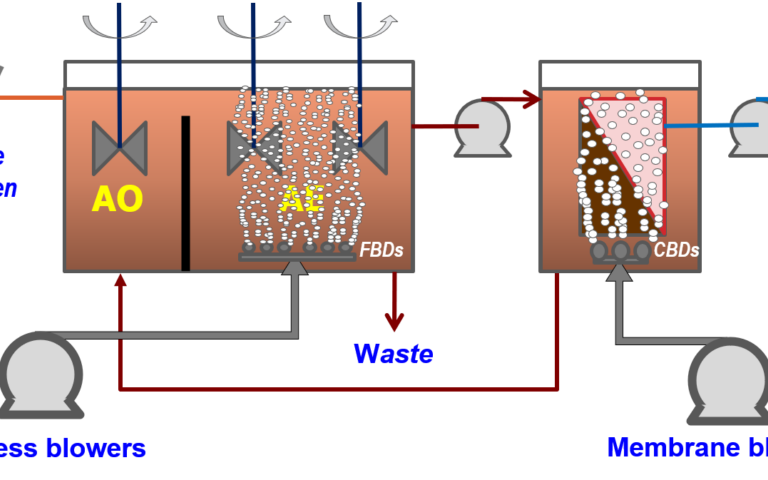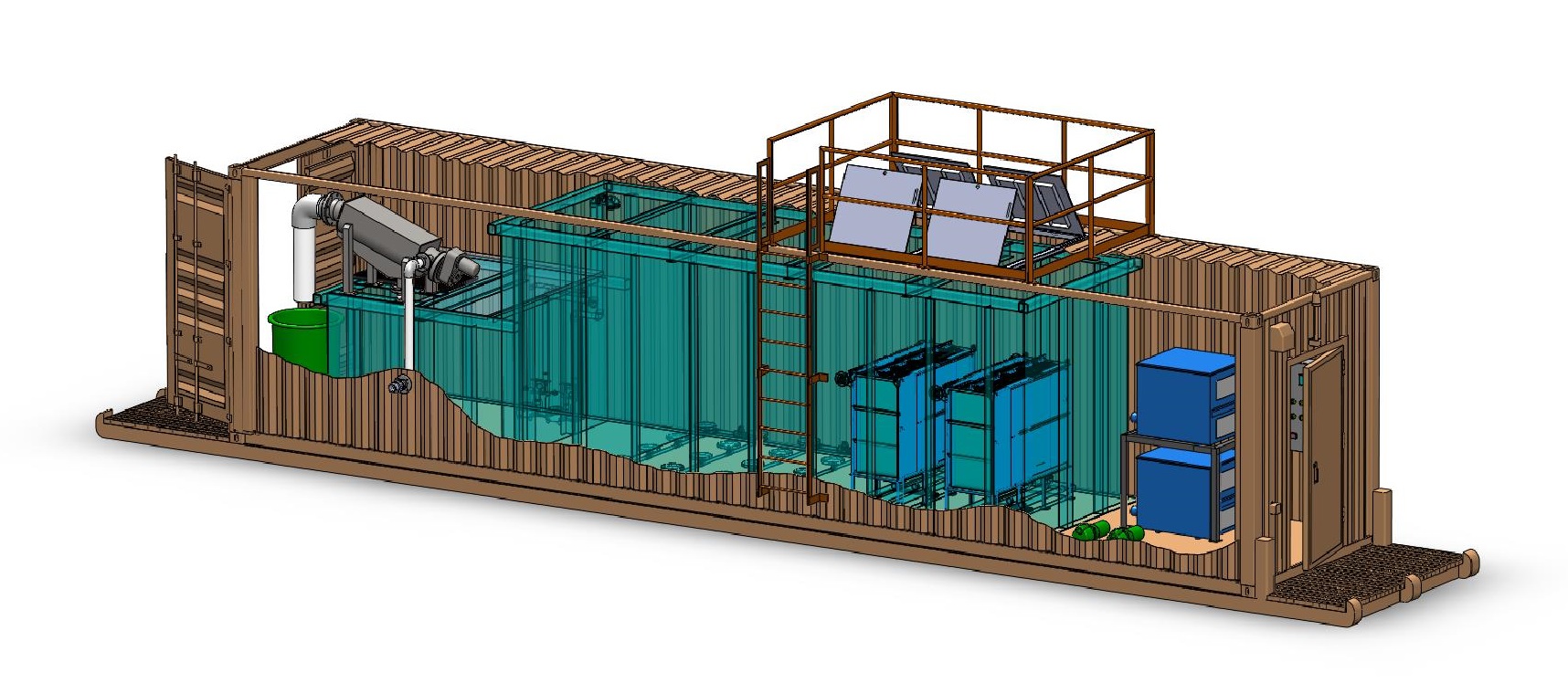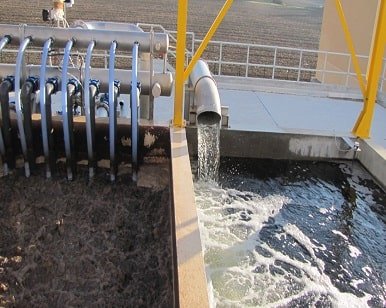Membrane Bioreactors Described: Efficient Solutions for Clean Water
Membrane bioreactors (MBRs) have arised as an advanced option for dealing with the pressing obstacles of wastewater therapy - Membrane Bioreactor. By integrating biological procedures with innovative membrane filtration, MBRs not just improve the quality of cured water however likewise decrease the spatial demands of therapy facilities.

What Are Membrane Bioreactors?
Membrane layer bioreactors (MBRs) are innovative wastewater therapy systems that integrate organic deterioration processes with membrane layer filtering innovation. This integration enables the efficient removal of impurities from water, making MBRs a favored selection in different applications, including local wastewater treatment and commercial effluent monitoring.

Among the vital advantages of MBRs is their capability to produce top notch effluent, frequently ideal for reuse in irrigation or commercial processes. Furthermore, MBRs require a smaller sized footprint contrasted to standard treatment systems, making them excellent for metropolitan setups where space may be restricted.
Additionally, MBRs can efficiently handle varying influent lots and are less susceptible to the results of hazardous shocks. These qualities add to their expanding popularity as a sustainable option for addressing the enhancing need for tidy water while minimizing environmental effects.
Just How Membrane Layer Bioreactors Work
While the operation of membrane bioreactors (MBRs) may seem facility, it basically focuses on the harmony between biological procedures and membrane layer filtration. MBRs integrate a biological treatment process, commonly activated sludge, with a membrane separation system to treat wastewater effectively.
In an MBR system, wastewater is initial presented right into a bioreactor where microbes weaken organic matter and other contaminants. The organic task decreases the concentration of contaminants while promoting the development of biomass. Following this biological therapy, the mixed alcohol is subjected to membrane filtering, which can be microfiltration or ultrafiltration, relying on the preferred effluent high quality.
The membrane layers serve as a physical obstacle, permitting water and little solutes to pass while keeping put on hold solids and bigger molecules. This enables the system to keep a high concentration of biomass within the activator, improving the therapy efficiency.
Moreover, the constant splitting up of treated water from the biomass promotes a small layout and decreases the impact of the therapy facility. Generally, the combination of biological deterioration and membrane filtering in MBRs results in dependable and reliable wastewater therapy, guaranteeing high-grade effluent suitable for different applications.
Benefits of MBR Technology
Among the key advantages of membrane layer bioreactor (MBR) technology is its ability to create high-grade effluent with a substantially reduced footprint compared to traditional wastewater treatment methods. MBR systems efficiently integrate biological treatment and membrane filtration, resulting in exceptional removal of pollutants, including suspended solids, microorganisms, see and natural issue. This capacity brings about effluent that often meets or exceeds stringent regulatory standards for reuse and discharge.
Additionally, MBR innovation enables greater biomass focus, which boosts the therapy performance and lowers the called for activator quantity. This small style is especially beneficial in urban areas where area is restricted. The operational versatility of MBR systems additionally implies they can adapt to varying influent top qualities and circulation rates, making them ideal for a wide array of applications.
Furthermore, the minimized sludge production connected with MBR procedures adds to reduce operational and upkeep costs. The membrane layers work as a physical barrier, decreasing the danger of blocking and enabling longer functional durations between cleansing. In general, the benefits of MBR technology make it an eye-catching option for lasting wastewater treatment, addressing both environmental problems and the requirement for reliable resource administration.
Applications of Membrane Bioreactors
With their adaptability and performance, membrane bioreactors (MBRs) locate applications across different sectors, including local wastewater therapy, commercial processes, and even water improvement. In municipal settings, MBRs supply a small service for dealing with wastewater, successfully removing impurities while simultaneously creating top notch effluent that fulfills strict regulatory criteria. This makes them especially suitable for locations with restricted area.
In industrial applications, MBR technology is utilized for treating procedure water, particularly in sectors such as food and drink, pharmaceuticals, and petrochemicals. These markets benefit from MBRs' ability to handle high organic lots and their efficiency in recovering beneficial sources from wastewater, such as nutrients and water.
Additionally, MBRs play a crucial role in water reclamation initiatives, enabling the reuse of treated wastewater for watering, commercial procedures, or also as drinkable water after additional treatment (Membrane Bioreactor). Their efficiency in removing pathogens and toxins makes them a trustworthy selection for making sure water high quality additional reading in various reuse applications
Future of Water Treatment Solutions
The future of water therapy options is poised for transformative innovations driven by technical advancement and boosting environmental recognition. As international water scarcity becomes a pushing concern, new methodologies, consisting of membrane bioreactor (MBR) systems, are established to play an essential role in boosting the effectiveness and sustainability of water therapy processes.
Arising innovations such as synthetic knowledge and device understanding are expected to maximize treatment procedures, allowing for real-time surveillance and predictive maintenance. This will certainly enhance the total reliability and efficiency of water treatment facilities. Improvements in membrane layer products, such as graphene and nanofiltration, promise to boost permeation prices and reduce fouling, leading to lower energy usage and functional prices.
Additionally, the integration of renewable resource resources into water treatment plants will add to greener practices. The round economic situation version will certainly likewise get grip, motivating the healing of important resources from wastewater, such as nutrients and power.
Verdict

Membrane layer bioreactors (MBRs) have actually arised as an innovative remedy for addressing the pushing challenges of wastewater treatment. By integrating biological processes with advanced membrane purification, MBRs not just boost the top quality of cured water however likewise minimize the spatial demands of treatment facilities.One of the key benefits of membrane layer bioreactor (MBR) innovation is its capability to click over here create top notch effluent with a dramatically lowered impact compared to conventional wastewater therapy approaches.With their adaptability and effectiveness, membrane bioreactors (MBRs) find applications across various fields, consisting of metropolitan wastewater therapy, commercial procedures, and also water improvement.In conclusion, membrane layer bioreactors represent a significant advancement in wastewater therapy innovation, incorporating organic processes with reliable membrane purification to create premium effluent.